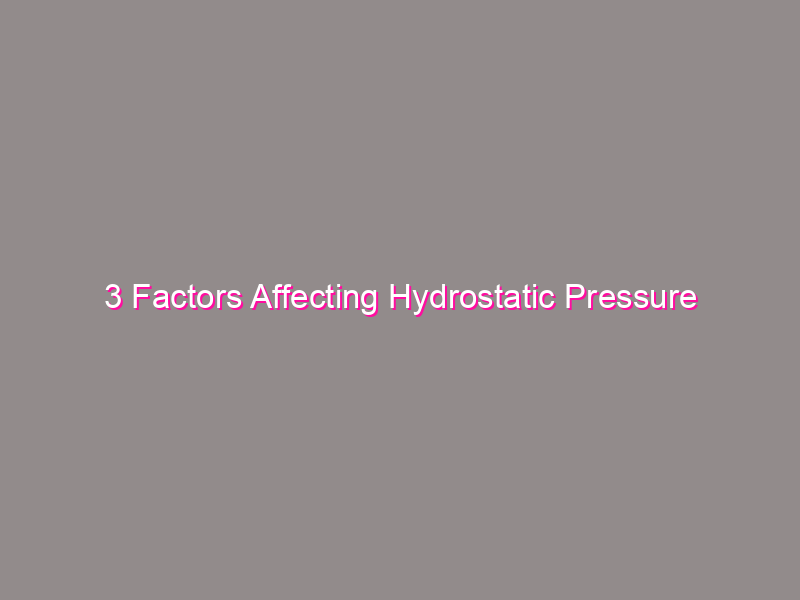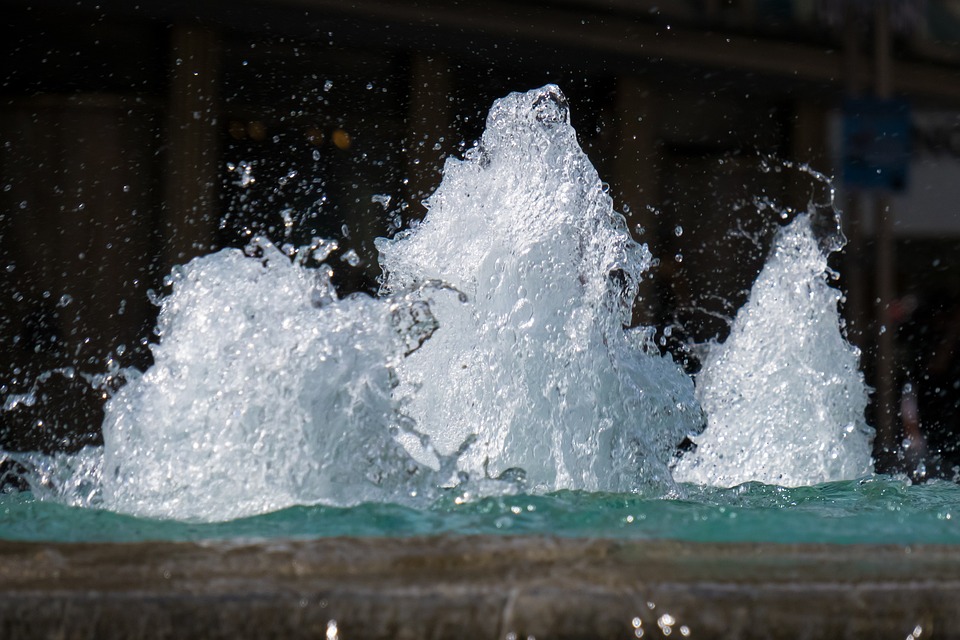

This can happen because the hydrostatic pressure at depth is stronger when compared to the hydrostatic pressure at the water surface. So in this article we will discuss hydrostatic pressure and how it is applied in everyday life. Come on , let’s just look at the discussion!
What is Hydrostatic Pressure
Hydrostatic pressure, as reported by Saintif, is the pressure that comes from a liquid in all directions on an object. This pressure can occur due to the force of gravity. The gravitational force is the cause of the weight of the water particles pressing on the particles below.
The result of this pressure is that the particles below will oppose each other to the bottom of the water. This can make the pressure below have greater strength when compared to the pressure above.
By definition, hydrostatic pressure is the pressure caused by the force that exists in a liquid against a compressive area, at a certain depth. Simply put, each type of liquid will exert a certain pressure, depending on the depth.
Therefore, when swimming or diving at a shallow surface it will feel easier compared to diving at a certain depth. Because the greater the volume of water above, the greater the pressure exerted by the water on the body.
Factors Affecting Hydrostatic Pressure
There are several things that can influence the occurrence of hydrostatic pressure, namely:
1. Type of liquid
If the density of a liquid is greater, the greater the hydrostatic pressure will be. For example, there are three types of liquids, namely water, oil and salt solution which are put into three separate cans. When we point to a point with the same depth in each liquid, the effect will be different. The hydrostatic pressure possessed by a salt solution will be greater than that of ordinary water. Meanwhile, the hydrostatic pressure of ordinary water will be greater when compared to oil.
2. Depth of Liquid (h)
The depth of the liquid also influences the hydrostatic pressure in the liquid. The farther a point in a liquid is from its surface, the stronger the hydrostatic pressure will be. This means that hydrostatic pressure will increase as the depth of a liquid substance increases.
For example, a can has three holes at different heights. The distance of the water jet at the bottom point or hole will be farther than the point at the top. This is because the hole located at the bottom will experience the greatest hydrostatic pressure compared to the other two points above it.
3. Gravitational Acceleration (g)
Gravitational acceleration can also have an influence on the hydrostatic pressure in liquids. Gravitational acceleration combined with the density of the liquid will produce the weight of the liquid (S).
What is Fluid?
Fluid is a fundamental component in measuring hydrostatic pressure. Fluid can be defined as a substance that has the ability to flow or run. Fluids can be divided into two, namely liquids or gases, what makes them different is their density or density. This density can be calculated by dividing the mass value of an object by the volume occupied by that object.
Difference Between Liquids and Gases
It is important to emphasize that gases generally tend to occupy the entire volume of the container in which they are located, whereas liquids are molded into the container but do not cover its entire volume.
Besides that, gases tend to be easier to calculate, because it is known that their volume and density vary depending on the amount of pressure.
On the other hand, liquids are not easy to understand, because their volume and density are constant at a certain temperature point.
Application of Hydrostatic Pressure in Daily Life
Actually, there are many examples of hydrostatic pressure that we can encounter in everyday life. However, we often don’t realize that this incident is an example of hydrostatic pressure. Here are some examples so that we can better understand the matter of pressure in liquids at rest:
- When we dive in a pool or sea, we will feel greater hydrostatic pressure the deeper we dive.
- The base of the dam at the base will become thicker in order to withstand the stronger the downward pressure of the liquid.
When installing an infusion, the higher the position of the infusion bottle, the greater the pressure that will occur. This makes it easier for IV fluids to enter the bloodstream more easily.
Properties of Hydrostatic Pressure
Below are the properties of hydrostatic pressure:
- Hydrostatic pressure will depend on the depth of the fluid.
- The pressure of a liquid in all directions is the same.
- At the same depth, the amount of pressure is also the same.
- Hydrostatics will be very dependent on gravity.
- Hydrostatic pressure will not depend on the shape of the place.
- Then the hydrostatic pressure will also depend on the density of the liquid.
Archimedes’ Principle And Hydrostatic Pressure
Archimedes of Syracuse was a Greek physicist, mathematician, astronomer and inventor who is considered one of the greatest and most influential scientists in classical history.
Archimedes is very famous throughout the world for having succeeded in creating innovative machines such as the Archimedes screw and weapons for sieges. As for the world of physical references, Archimedes chose to focus his studies on hydrostatics.
Archimedes’ principle, also known as hydrostatics. The law of hydrostatics states that “a body that is totally or partially submerged in a fluid when at rest, experiences a vertical and upward thrust equal to the weight of the mass of the volume of fluid it ejects.”
This means that any object that is completely or only partially immersed in a static fluid will feel pressure with a force equal to the volume weight of the fluid that has been displaced by the same container.
As far as hydrostatic pressure is concerned, it can be said that at a certain depth, the pressure will be equal to the product of the fluid density and the acceleration due to gravity.